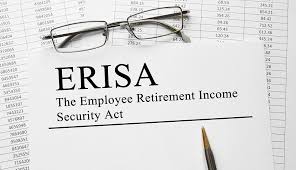Offboarding is the process of transitioning employees out of your organization due to resignation, termination or retirement. Offboarding requires employers to complete a variety of critical tasks in a short timeframe, including finalizing payroll, retrieving company property and transferring the departing employee’s job responsibilities. An effective offboarding process can help ensure your organization complies with relevant laws and that necessary tasks are completed in a timely manner.
This checklist is a guide for addressing employee benefit issues during the offboarding process. This component of the offboarding process will differ based on each employer’s benefit offerings and compliance obligations under state laws. Due to the complexities of offboarding, employers are encouraged to consult with legal counsel regarding specific issues or concerns, including possible claims for unemployment benefits.
- Review the employee’s enrollment in your organization’s employee benefit plans (e.g., medical, dental, vision, disability, life insurance, etc.) and determine when coverage will terminate under the terms of each plan.
- For insured benefits, notify each insurance carrier of the employee’s termination date so they can terminate coverage in a timely manner. For self-insured benefits, provide this notification to the plan’s third-party administrator (TPA) or other service provider that handles enrollment.
- Provide a COBRA Election Notice for health coverage to the terminating employee.
In general, COBRA applies to group health plans maintained by private-sector employers with at least 20 employees in the previous calendar year. Group health plans include fully insured health plans, self-insured health plans, level funded health plans, dental and vision plans, health flexible spending accounts (FSAs) and health reimbursement arrangements (HRAs). COBRA does NOT apply to health plans maintained by small employers (fewer than 20 employees) or churches, although state continuation coverage may apply to these plans
-
For insured benefits, determine if there are any state continuation or policy conversion rights. Review policy documents and reach out to your insurance carrier for more information on state continuation coverage requirements and conversion rights under the policy. If these rights apply, confirm they are communicated to the employee and required notices are provided.
- Maintain records documenting your organization’s provision of the COBRA Election Notice and any state continuation coverage notice, if applicable.
Maintaining complete and accurate records regarding the delivery of these notices will help an employer if a dispute over health coverage arises.
-
For voluntary benefits, review any portability features and related requirements with the employee. Voluntary benefits (e.g., critical illness insurance, pet insurance, long-term care insurance, etc.) may be portable, which means that employees can keep their coverage when they change jobs if premiums continue to be paid.
-
Review the employee’s balance in any health FSA, dependent care FSA or HRA maintained by your organization. Communicate this information to the employee and inform them of the deadline for submitting claims. Most health FSAs, dependent care FSAs and HRAs are structured so employees forfeit any unused balances remaining in their accounts when their employment ends, subject to any run-out period for submitting claims. However, employers should review their plan documents to determine the specific rules that apply to their benefit plans. Also, note that employees may be able to elect COBRA continuation coverage for health FSAs and HRAs.
-
Review paid time off (PTO) balances and inform employees how unused PTO will be processed at termination of employment. Federal law does not require employers to payout unused PTO when an employee is terminated, resigns or retires. However, many states have laws requiring employers to pay out the value of unused vacation time, sick days or other PTO when their employment ends. Check state laws and your organization’s leave policies to determine if the employee’s unused PTO can be forfeited or whether it must be paid out.
-
If the employee participates in your organization’s retirement plan, review the available options for their vested account balance. Depending on the plan’s terms and the employee’s specific situation, these options may include distributing the employee’s vested account balance as a cash-out or rollover to an IRA or other qualified plan, or leaving the employee’s money in the employer’s retirement plan. Employers should consult with their retirement plan service providers to identify the available options and ensure the employee is provided with required plan notices.
-
Notify the employee about the availability of unemployment insurance benefits, if applicable. Several states have laws that require employers to provide a separation notice when an employee leaves an organization that addresses unemployment insurance benefits. Most states with this requirement have specific forms that employers must use for this disclosure.
Use this checklist as a guide when establishing, reviewing or improving your organization’s offboarding process for employee benefits. For more workplace resources, contact Inspire Workforce LLP.





